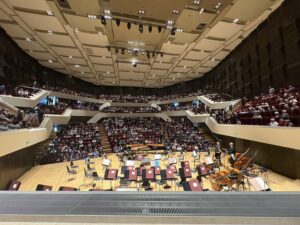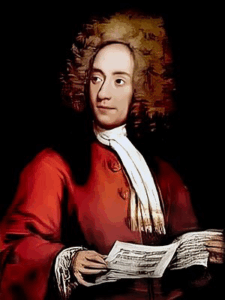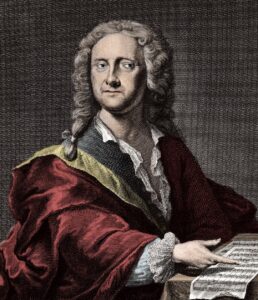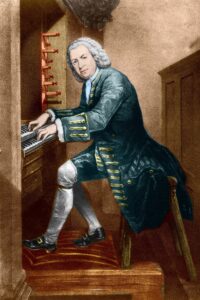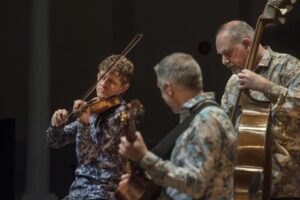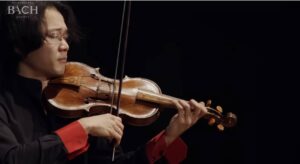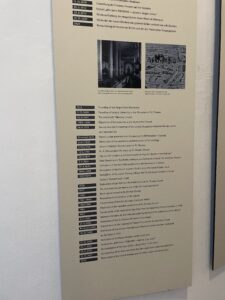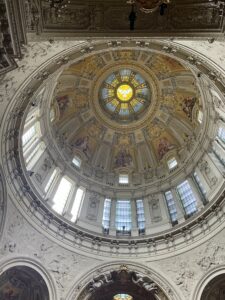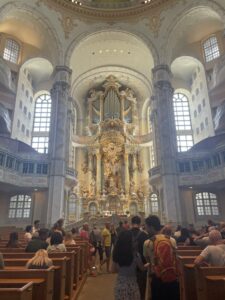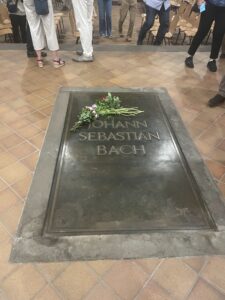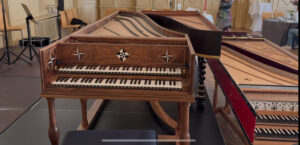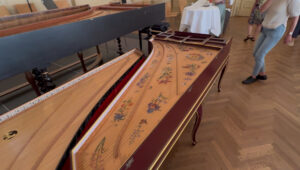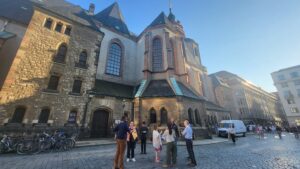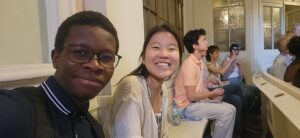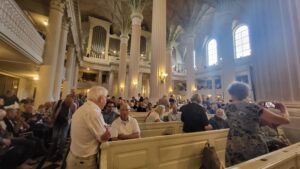The annotations, edits, and markings made by musicians on some of Bach’s original manuscripts were what stood out to me the most during our first visit to the Bach archive . It was fascinating to see how Bach’s performance ideas shifted and evolved throughout the course of his life as his works were performed, and how some of his ideas were recycled in different pieces or edited to fit a different piece’s requirements. I felt incredibly privileged by the opportunity to see some of the original scores (penned by his copyists) and the account books that included his signature. I also enjoyed our later visit to the Bach VR exhibit, which highlighted an increase in accessibility beyond the scholarly realm to Bach’s life and works – I found his use of the snuff box amusing, his anecdotes about his childhood and life entertaining, but was a little unsettled by the idea that Bach was supposed to be talking to me…
Of particular interest to me during our primary visit was the cartoonish satire doodle in one of the choristers’ chorale books:

First, I think this scribble humanizes Bach’s choristers. It is easy to forget, as we discussed repeatedly during our time in Leipzig, that those we consider ‘greats’ were human too, and faced the same human interactions and emotions that we have today. It also uncovers a rare moment of humor, reminding me of the long history of political satire. Clearly, the rehearsals and work of the Thomanerchor cannot always have been as serious as I imagine them – was the chorister bored? Or perhaps sneaky? Or did he take the book back to his lodgings with him? It is fun to imagine the possibilities about how this image came about.
The doodle itself is indicative of a mindset of ridicule toward the Leipzig guards who paroled the city walls, hinting at an attitude of mockery on the part of the chorister in question. Perhaps this chorister thought that the guards were useless – after all, they are depicted as rats – or otherwise invasive and unnecessary. The rats look almost unable to use their large weapons, which stand much taller than them, suggesting that they are unable to do their jobs. Moreover, their heads are pointed upwards, making them look oblivious of their real responsibilities. All this indicates to me an attitude of mockery, distrust, and ridicule of the military presence in Leipzig from the chorister — perhaps he considered Leipzig’s defenses insufficient, or perhaps this is a criticism of the necessity of guards (is the music contained in the chorale book perhaps the antithesis to the militance or inefficiency of the guards in Leipzig?)… What can we take away more broadly from this image beyond the chorister’s own musings?
Peter Wollny noted that as of yet they had not been able to decipher the text around the doodle, and at that point in the course, my German was not good enough to attempt to figure it out myself. It would be fascinating to me to further uncover what was meant by this cartoon with the words that surround it!
